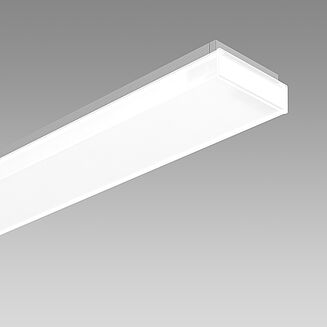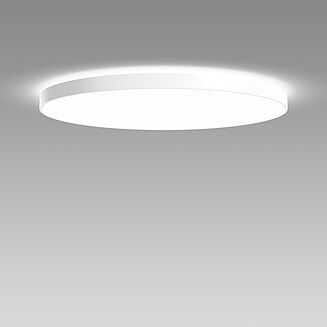An illuminating working environment at Daimler
Boosting well-being in the workplace with an innovative product solution by Regent Lighting
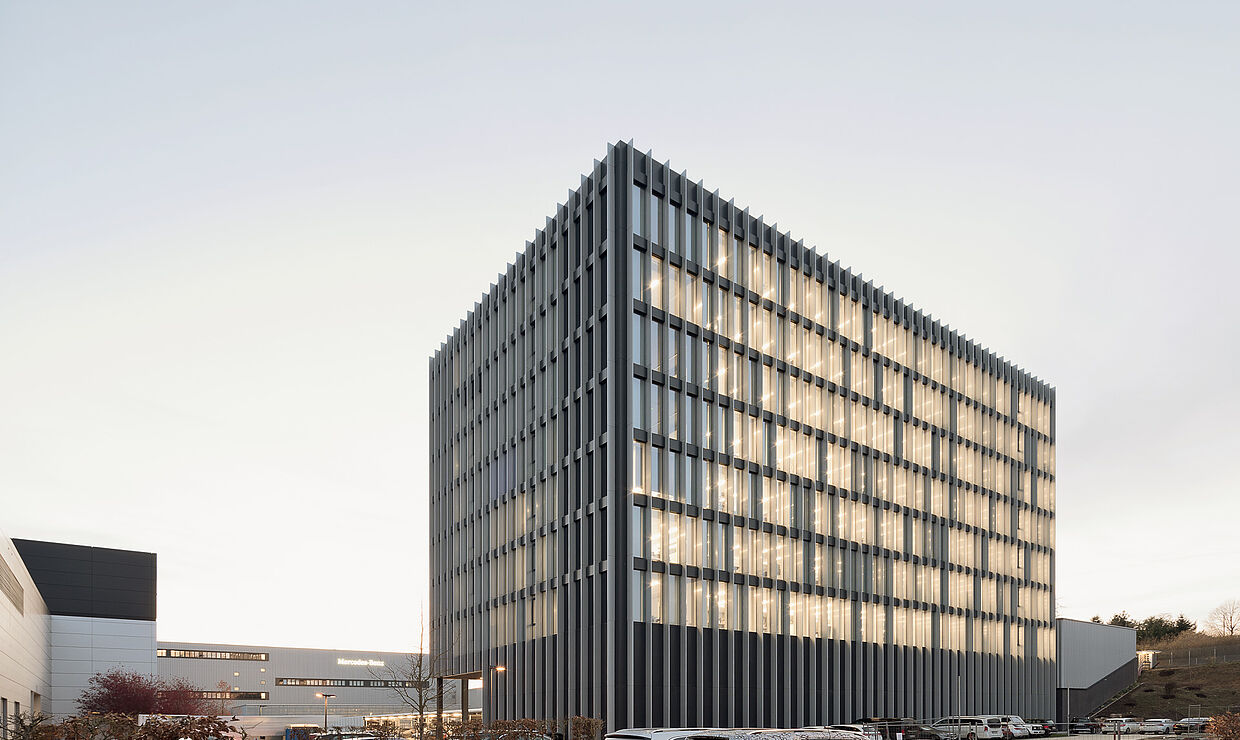
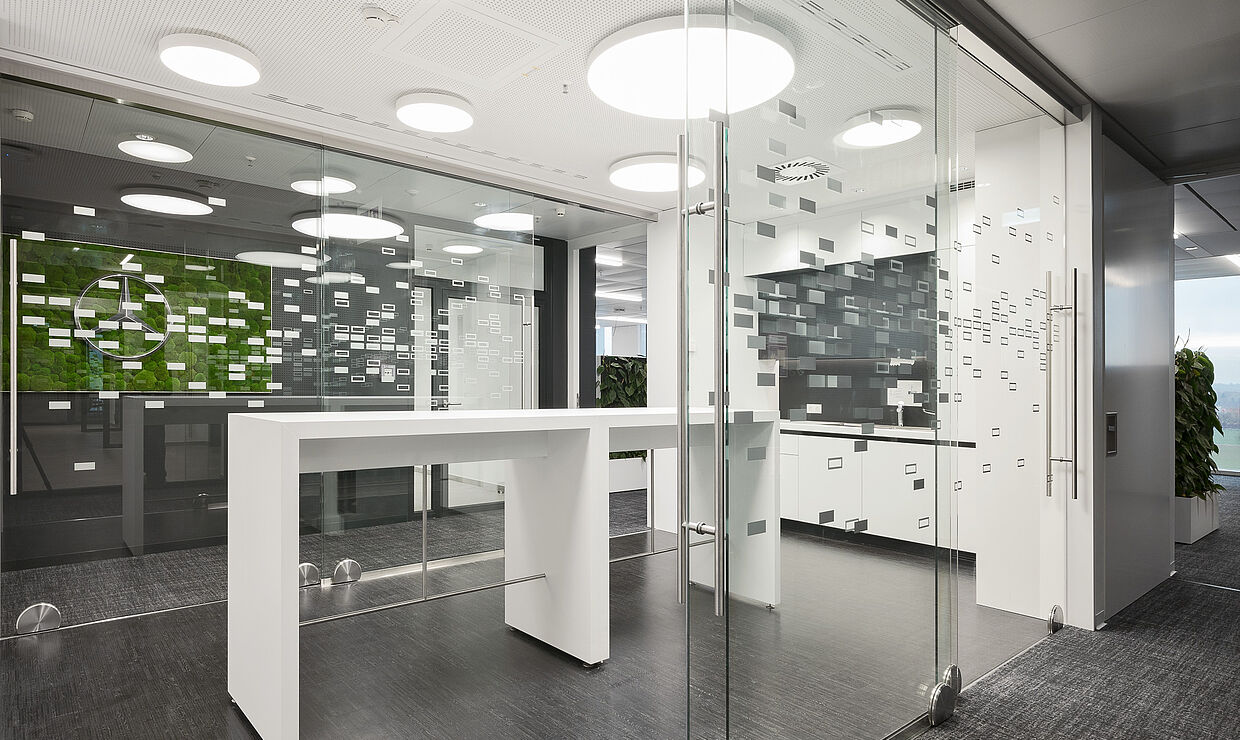
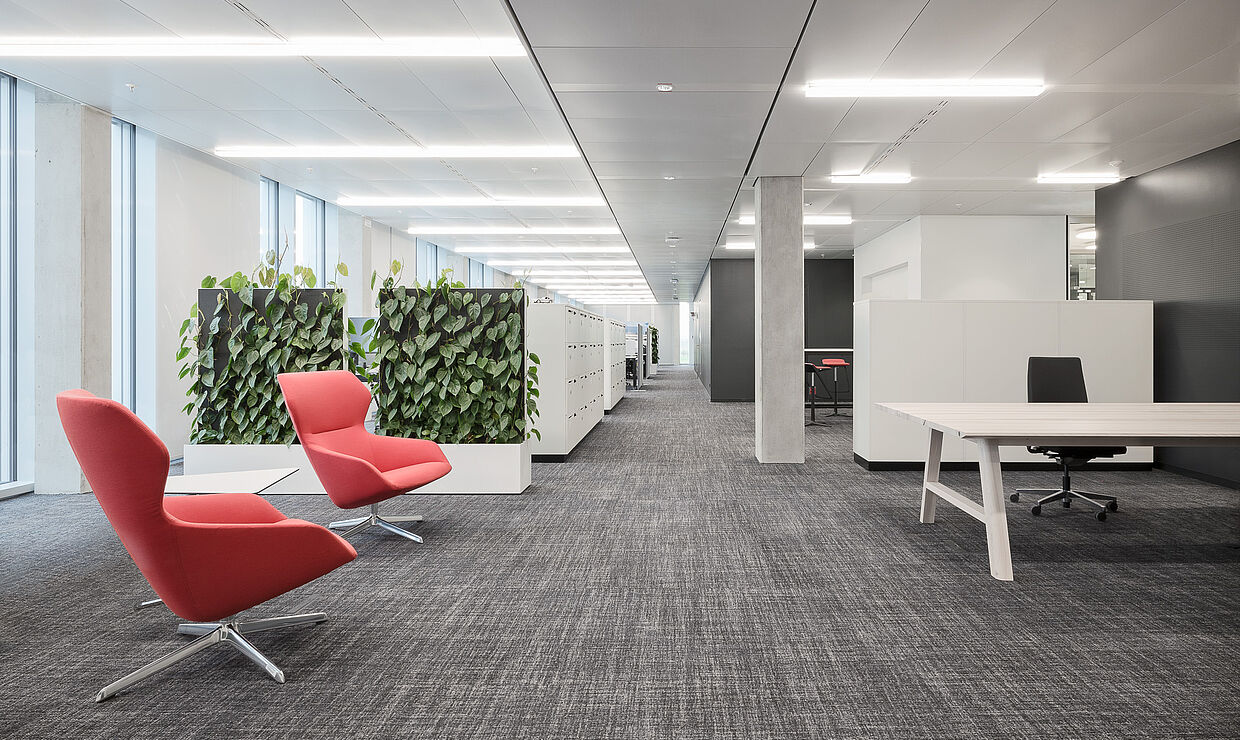
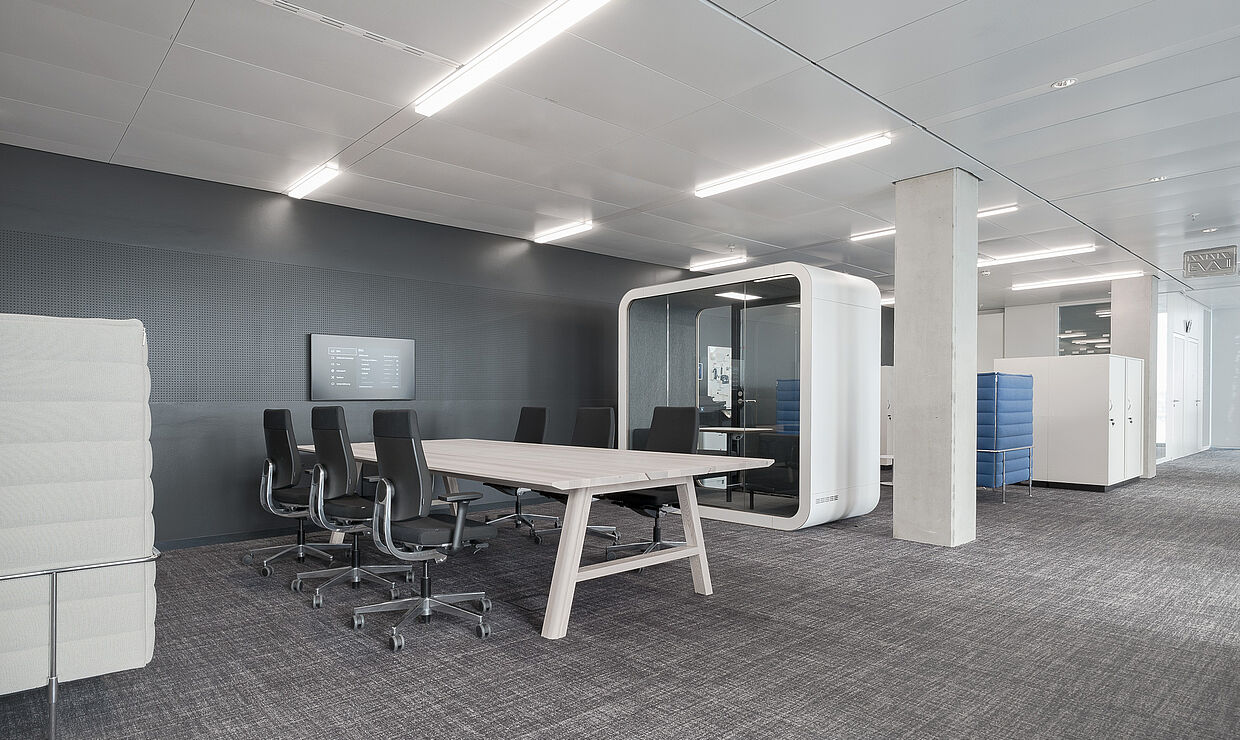
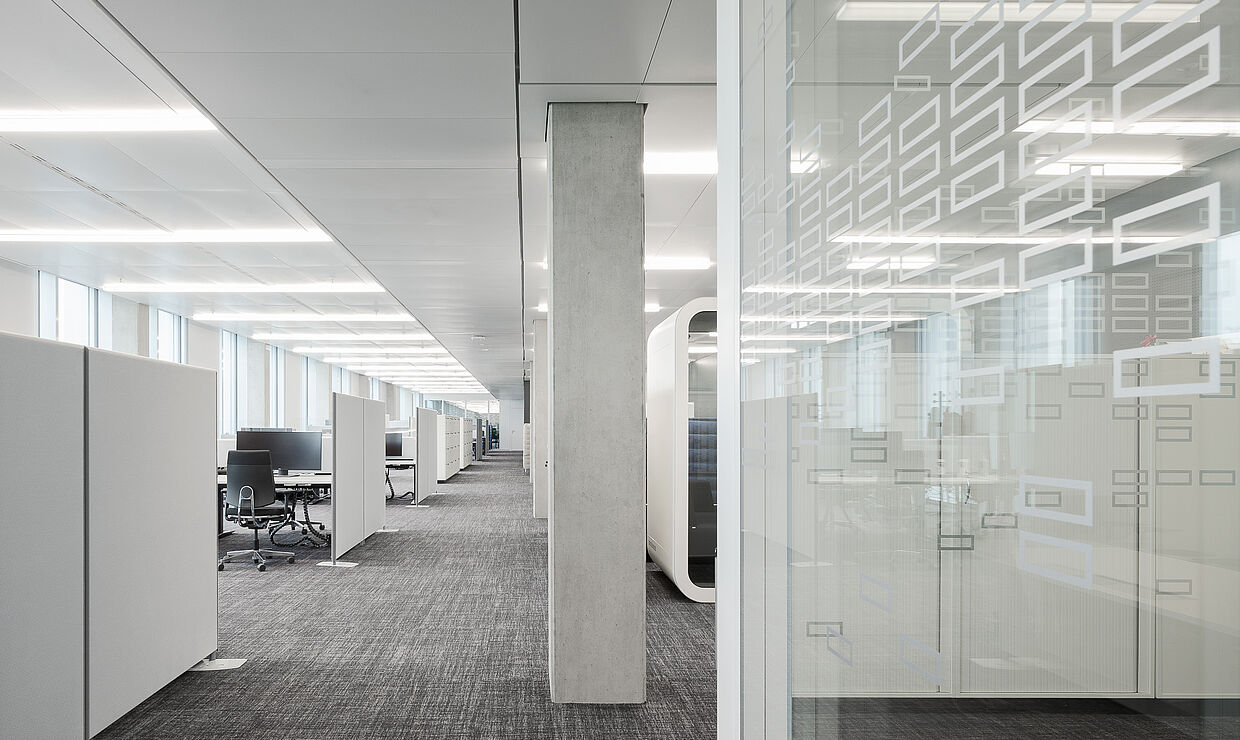
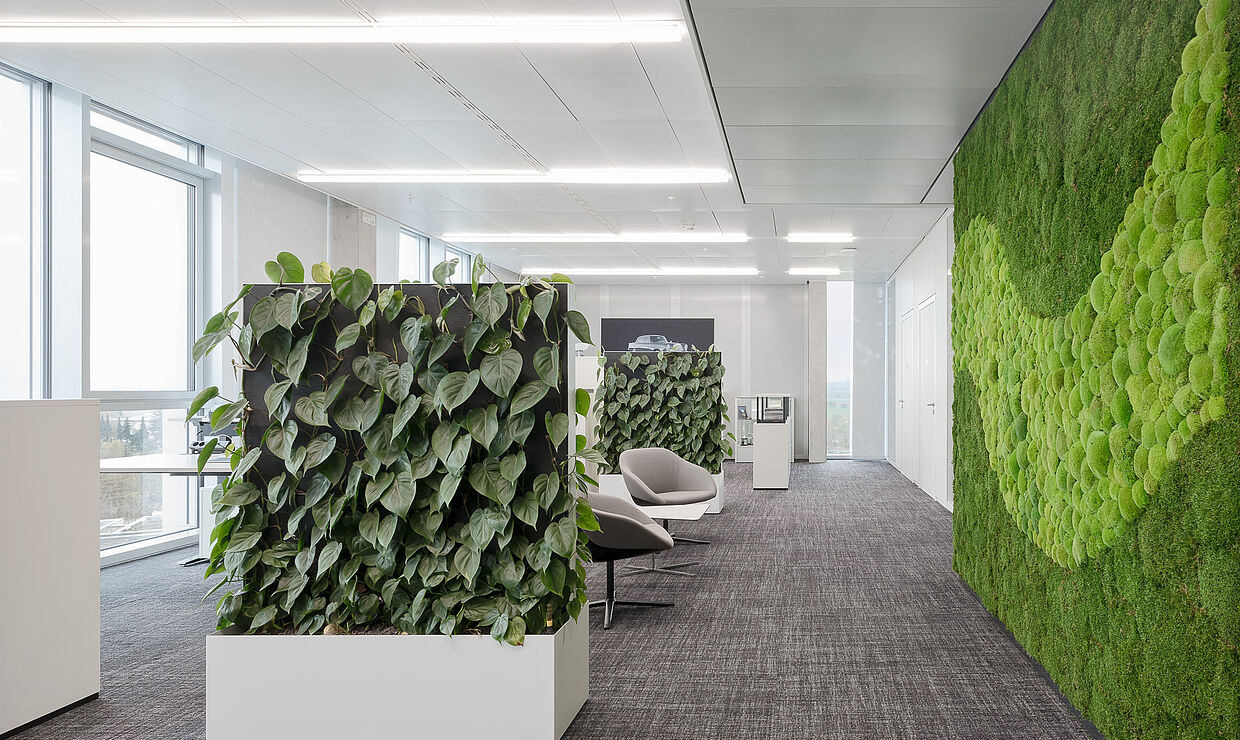
Flexible Engineering-Gebäude 64/5 Daimler, Sindelfingen, Germany
- Ownership
- Daimler AG, Sindelfingen
- Architecture
- Heinle Wischer und Partner, Stuttgart
- Lighting design
- Planungsgruppe M+M AG, Böblingen
- Photography
- © Brigida Gonzales, Stuttgart
The Flexible Engineering Building 64/5 on the Daimler AG factory premises in Sindelfingen, Germany, was fitted with luminaires by Regent Lighting. Steffen Pfleiderer, Stuttgart Regional Sales Manager at Regent Licht GmbH Düsseldorf, explains why Regent was the right choice and tells us about the collaborative relationship with the client and the architects.
What were the special aspects of this project? And why did the client choose Regent Lighting products?
The structure is an extremely innovative office building, where 550 workstations are organised in line with the modern concept of activity-based working. Consequently, there’s a combination of primary workstations, open communication zones and closed areas such as meeting rooms and think tanks. The great advantage of this layout is the variety of different work situations that employees can choose from, depending on what they are presently working on and on their different activities in their daily routines.
As far as the lighting was concerned, this concept, the client’s requirements and the building’s architectural design were quite challenging. Therefore, the luminaires had to be integrated into the perforated metal ceiling, necessitating a light weight and a low installation height. They also had to be installable on splices and guarantee the maximum lumen output possible. We managed to meet these requirements with our products – that is why the client and Elektro-Breitling GmbH both opted for us.
What won the buyer over?
Our PURELITE channel lighting system meets all the criteria just mentioned. It also scores top marks in lighting calculations due to its high efficiency. And, naturally, the light’s pleasant characteristics played a central role, being crucial in the workplace. The right office lighting significantly influences the quality of employees’ work.
Did the architectural firm responsible have any influence over the choice?
The building was designed by Heinle, Wischer and Partners from Stuttgart. This had a crucial and decisive impact on our work, since they supported the lighting concept and involved the client at an early stage. Heinle, Wischer and Partners were outstanding in persuading the client that the luminaires ought to be aligned perpendicular to the façade – contrary to the usual longitudinal orientation. As a result, they adopt the façade pattern and reinforce the uniform appearance.
At which planning or implementation stage did the collaborative relationship start?
We started our work during the design phase already.
How did you ensure your product’s ideal insertion and effect in this project?
Essentially, it always boils down to having the right culture of communication and cooperation at heart. We always seek to foster a close, productive, and cooperative relationship with everyone we believe to be a key contact in the project: the electricians, the planners and, obviously, the client.
Has your contract ended now, or will you accompany and support the project during the operational phase?
Our contract ended in September 2019 with the last delivery and we can proudly say that all was completed very successfully.
How could architects improve the impact of your products and the product’s performance on the project through increased commitment?
The architects we’ve worked with so far have always been very committed. In this project, for instance, they were very involved in the lighting concept. However, architects should never be indifferent to the type of lighting used in their buildings. We provide absolutely everything: aesthetics, a modern, timeless design that is perfectly integrated into the architecture, and the best possible lighting quality. This sometimes requires us to be highly persuasive – unfortunately, lighting and the associated planning account for only a very small percentage of the construction budget all too often.
What were the special aspects of this project? And why did the client choose Regent Lighting products?
The structure is an extremely innovative office building, where 550 workstations are organised in line with the modern concept of activity-based working. Consequently, there’s a combination of primary workstations, open communication zones and closed areas such as meeting rooms and think tanks. The great advantage of this layout is the variety of different work situations that employees can choose from, depending on what they are presently working on and on their different activities in their daily routines.
As far as the lighting was concerned, this concept, the client’s requirements and the building’s architectural design were quite challenging. Therefore, the luminaires had to be integrated into the perforated metal ceiling, necessitating a light weight and a low installation height. They also had to be installable on splices and guarantee the maximum lumen output possible. We managed to meet these requirements with our products – that is why the client and Elektro-Breitling GmbH both opted for us.
What won the buyer over?
Our PURELITE channel lighting system meets all the criteria just mentioned. It also scores top marks in lighting calculations due to its high efficiency. And, naturally, the light’s pleasant characteristics played a central role, being crucial in the workplace. The right office lighting significantly influences the quality of employees’ work.
Did the architectural firm responsible have any influence over the choice?
The building was designed by Heinle, Wischer and Partners from Stuttgart. This had a crucial and decisive impact on our work, since they supported the lighting concept and involved the client at an early stage. Heinle, Wischer and Partners were outstanding in persuading the client that the luminaires ought to be aligned perpendicular to the façade – contrary to the usual longitudinal orientation. As a result, they adopt the façade pattern and reinforce the uniform appearance.
At which planning or implementation stage did the collaborative relationship start?
We started our work during the design phase already.
How did you ensure your product’s ideal insertion and effect in this project?
Essentially, it always boils down to having the right culture of communication and cooperation at heart. We always seek to foster a close, productive, and cooperative relationship with everyone we believe to be a key contact in the project: the electricians, the planners and, obviously, the client.
Has your contract ended now, or will you accompany and support the project during the operational phase?
Our contract ended in September 2019 with the last delivery and we can proudly say that all was completed very successfully.
How could architects improve the impact of your products and the product’s performance on the project through increased commitment?
The architects we’ve worked with so far have always been very committed. In this project, for instance, they were very involved in the lighting concept. However, architects should never be indifferent to the type of lighting used in their buildings. We provide absolutely everything: aesthetics, a modern, timeless design that is perfectly integrated into the architecture, and the best possible lighting quality. This sometimes requires us to be highly persuasive – unfortunately, lighting and the associated planning account for only a very small percentage of the construction budget all too often.
